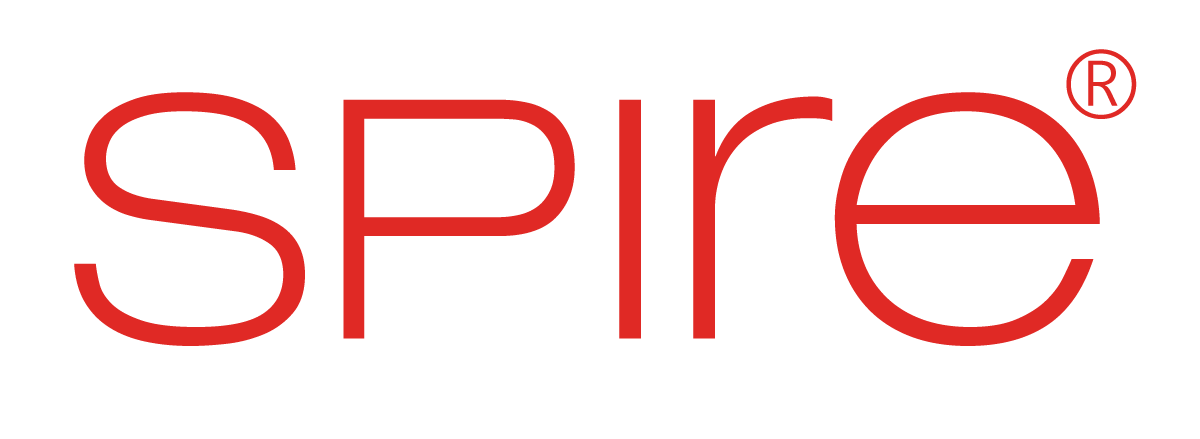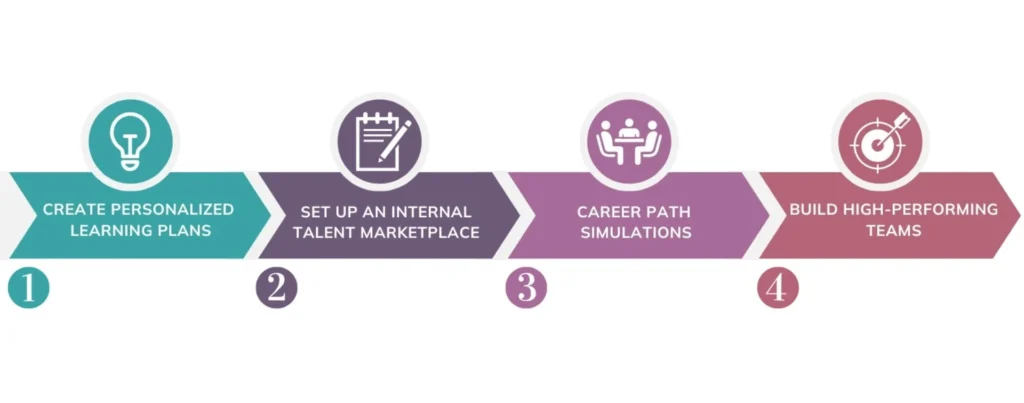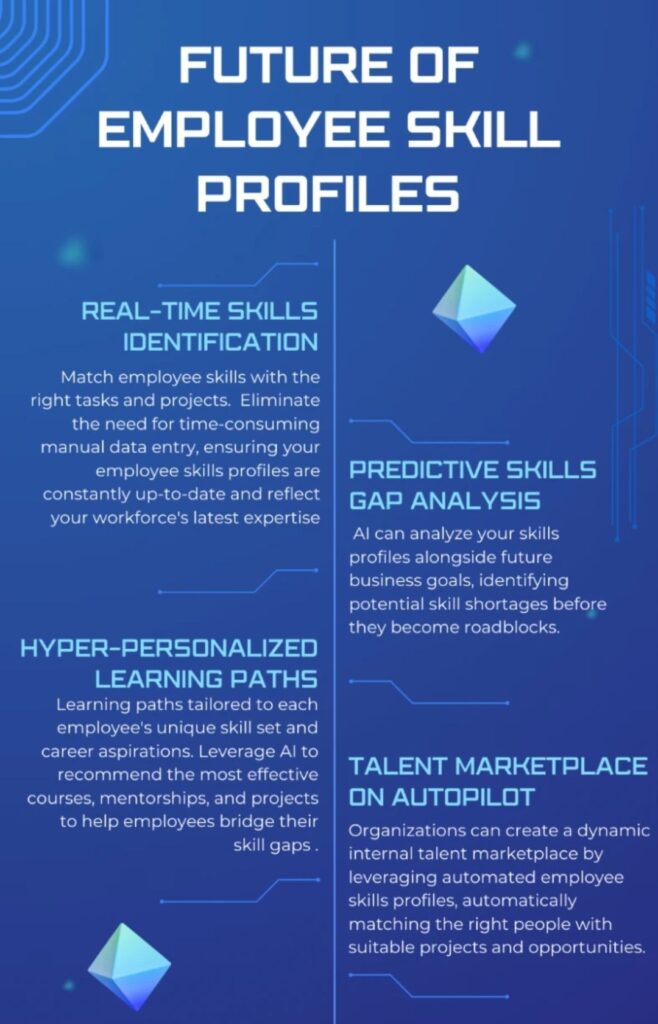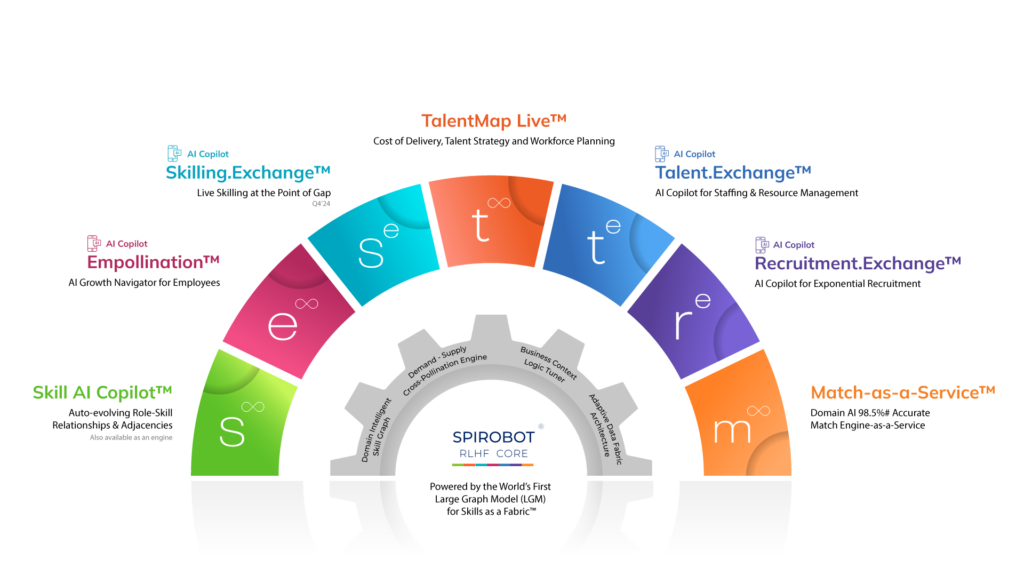Your workforce is your most valuable asset, but are you using their full potential?
Many organizations lack complete and up-to-date employee skill profiles. This deficiency can lead to underutilized talent and missed opportunities. In today’s fast-paced business environment, it’s crucial to have a strategy to maximize your workforce’s capabilities.
Comprehensive and updated employee skill profiles are the key to unlocking this potential. These profiles clearly show your employees’ strengths, weaknesses, and development needs.
Resumes or CVs offer a linear view of a candidate’s experiences and are suitable for hiring candidates. On the other hand, employee skill profiles provide a comprehensive and dynamic picture of an employee’s skill set. This includes their skills, proficiency levels, and experience using those skills. These profiles serve as the essential foundation for employee development and growth, providing valuable insights into the most important “raw material” for an employee’s success – their skillset.
| Resumes or CVs | Employee Skill Profiles |
| Offer a linear view of a candidate’s experiences | Provide a comprehensive and dynamic picture of an employee’s skill set |
| Suitable for hiring candidates | Suitable for all stakeholders in the organization |
| Captures only specific skills, experiences, and certifications that are relevant to a job application | It captures an employee’s ongoing skills, experiences, training, aspirations, etc. Includes their skills, proficiency levels, and experience using those skills |
| Updated only for job applications and doesn’t capture current organizational learnings | Continuously updated with the employee’s organizational journey |
This blog explains the power of employee skills profiling, its components, benefits, and how it empowers businesses and employees. It also provides the easiest ways to start with skills profiling.
Let’s explore the concept of employee skills profiles more to capitalize on the trending business currency—skills!
What is a Skills Profile?
An Employee Skills Profile is a comprehensive record that outlines an individual’s skill set, proficiencies, experience, and qualifications.
Instead of focusing on educational qualifications and achievements, a skills profile considers several data points. These data points realistically enable and determine an employee’s organizational success.
A skills profile typically consists of
- Primary skills (Expert skills)
- Secondary or adjacent skills (advanced and proficient skills)
- Skill proficiencies
- Soft skills
- Validation of skills by managers or SMEs
- Transferrable skills
- Role in the organization
- Trainings completed
- Certifications
- Projects worked on
Employee Skills Profile vs. CV Skills Profile
The main difference between employee skills and CV skills profiles is their focus and purpose. Job seekers design a CV skills profile to acquire a role, which can differ for every job application. A skills profile takes a more holistic approach. It gives a complete overview of an employee’s skill capabilities, highlighting current expertise and potential for development and growth.
The Power of Skill Profiling
Skill profiling offers decision-makers a strategic and comprehensive view of their workforce capabilities and capacity. By identifying employees’ skills and how they apply them, businesses can understand employee’s strengths and weaknesses. This information allows them to align employees accurately with organizational goals.
Why Use Employee Skills Profiles?
Employee skill profiles can unlock a wealth of benefits for your organization, such as understanding the collective skills within your company, optimizing resource mobility, and identifying skill gaps. Below are several compelling reasons why organizations should use employee skill profiles.
Gain a Clearer Picture of Your Workforce
Understand your company’s collective skillsets, identifying strengths and weaknesses. Live employee capabilities and capacity dashboards allow leaders to make data-driven business and talent decisions about developing or acquiring talent.
Optimize Resource Mobility and Allocation
Match the right people with suitable roles based on their skills and experience across the company.
Identify Skill Gaps and Development Needs
Pinpoint skill gaps and encourage your workforce to upskill or reskill to meet evolving business demands.
Facilitate Career Development
Empower employees to identify their strengths, set development goals, and explore career growth opportunities within the organization.
Build High-Performing Teams
Create cross-functional teams with complementary skills, fostering collaboration and innovation. Promote and reward Consistent High Performers (CHPs) for career development and growth.
For employees, complete and updated skills profiles would mean the following –
Deepen Understanding of their Skills
Gaining a deeper understanding of one’s skill set can empower employees to take ownership of their career paths within the organization, aligned to their aspirations, mobility options available, and future talent needs.
Fuel Growth & Career Development
Skills profiles give managers visibility into their team’s skill landscape. This visibility facilitates conversations between employees and managers about career goals and highlights areas for upskilling or reskilling.
Boost Visibility
A well-defined profile increases an employee’s visibility within the organization, potentially connecting them to new opportunities based on the skills and capabilities of the employee.
Building Effective Skills Profiles
Creating a practical skills profile requires collaboration between employees and the organization. Typically, a skills profile includes data points listed below –
- Functional and Technical Skills: Functional and technical skills with proficiency levels.
- Soft Skills: Include skills like communication, problem-solving, and teamwork.
- Experience: Briefly describe the employee’s overall experience, tenure within the organization, and accomplishments that showcase how they applied their skills.
- Projects: A separate focus on the projects the employee has participated in to illustrate their skill applications and expertise gained while working on the project.
- Certifications: Include any relevant certifications the employee has acquired that demonstrate the employee’s expertise in specific skills.
- Learning Goals: Outline skill gaps you’d like employees to develop further, demonstrating a commitment to continuous learning.
Employees typically enter the skill and proficiency data themselves, termed employee-declared skills. This employee skills data then goes to their managers for validation and feedback.
Here are some additional tips for building practical skills profiles –
- Using a standardized format ensures consistency and easy comparison across different employee profiles.
- Regularly review and update employee skills profiles to reflect new skills and experiences.
- Showcase a diverse skillset while demonstrating expertise in specific areas.
Traditionally, employees fill out extensive forms that capture these data points. However, this approach of seeking employee data has seldom worked for organizations to have complete and updated skill information about their employees as they are always busy with increasing work demands and ongoing projects.
An AI Copilot for Talent can help intelligently generate employee skill profiles using existing employee data points available within the organization. This approach means employees do not have to fill out data, which saves them time and energy.
The only information an AI Copilot for talent requires is the company’s employee database, role, and hierarchy. The large skill graph model automatically matches employees with the correct primary and secondary skills.
Leveraging Employee Skills Profiles for Mobility and Growth
Once you have created employee skills profiles, the next step is to use this rich data to make decisions about your workforce development and growth aligned with the organization’s goals.
With a strategic approach and powerful tools listed below, you can seamlessly deploy the captured information through employee profiles and create a skills-based talent strategy for your organization.
Empowering your workforce and fostering growth doesn’t have to be a complex endeavor. Employee skills profiles are key to a strategic and achievable talent management process.
By leveraging these profiles and the right tools, you can unlock a four-step approach that aligns your workforce development with your organization’s goals.
- Identify skill gaps & create personalized plans – Use skill profiles to identify employee skill gaps regarding their current and future successive roles. This will help support employees’ learning and development. Further, create personalized learning plans for employees.
- Create career paths for horizontal & vertical growth – Help employees see their career options with easy-to-understand roadmaps. This gives employees visibility into their future within the company.
- Set up an internal talent marketplace – This fosters internal mobility and paves the way for implementing an internal-first strategy. This marketplace uses skills information to match employees with job openings across the company.
- Building High-Performing Teams with Skills Matching – Identify consistent high performers and match roles with the right talent by identifying employees with the necessary skill sets.
Let’s examine these applications in detail.
Identifying Skill Gaps and Development Needs
A report by PwC found that 77% of workers are willing to learn new skills for their jobs. Creating employee skills profiles is a great way to kickstart this initiative for your organization.
These profiles show where employees need to improve so you can create a personalized learning plan for proactive upskilling and reskilling intervention. This learning path will help employees acquire and replenish skills, improve employee retention, and give them the confidence boost and visibility they need to grow.
In the current business landscape, significant learning and development initiatives are impossible to achieve using manual methods and current talent systems. Building skill profiles takes ages, hindering the identification of skill gaps. Personalized learning paths for upskilling and reskilling remain an action item in the pipeline, leaving your workforce unprepared for the future.
Building skill profiles takes ages, hindering the identification of skill gaps.
With automated employee skill profile generation using Generative Skills AI, you can auto-generate employee skill profiles almost instantaneously for more than 83% of your workforce.
By automating the process for generating employee skill profiles, you can have an all-around view of the skills possessed by every employee in your organization. You can auto-generate employee skill profiles with AI-powered tools like Spire.AI, which only require basic inputs like job titles. In addition, you can pull data from other sources like employee databases, learning systems, resumes, etc. This data will include information about the employee’s primary and adjacent skill proficiency, training completed, certifications acquired, role-skill fitment, and employee aspirations. All without long and complex skill assessment forms.
With such rich data available at your fingertips, you can lay a solid foundation for skills-based talent management. First, proactively identify skill gaps in every profile. Secondly, bridge these gaps by easily creating a personalized upskilling and reskilling plan for each employee that caters to their individual needs and aligns with the company’s future talent vision.
This will help you prepare your employees for growth within the organization and give you more room to strategize for internal mobility. This not only saves you valuable time but also helps you overcome the hurdle of identifying skill gaps that otherwise remain only a pipeline dream.
If you utilize a solution like Spire.AI to help you auto-generate employee profiles using Generative Skills AI, you can instantaneously identify skill gaps within profiles and auto-generate personalized learning paths that are aligned with the growth opportunities in the organization. You will save time and resources and chart a course for progress much faster.
Creating a Skill-Based Talent Marketplace
A dedicated skills-based talent marketplace extends the power of employee profiles. You can proactively approach talent management and search for internal talent based on specific skill requirements, maximizing existing resources and reducing external recruiting costs.
Once you have established employee learning pathways, you can match them to open roles based on the skill requirements.
Show employees a clear growth path within the organization by aligning the upskilling & reskilling recommendations with open positions, motivating them to upskill and re skill faster for internal opportunities.
Traditional structures leave hidden talents undiscovered. Creating employee profiles takes a long time, and they match employees with internal roles either manually or with outdated systems.
By automatically generating employee skill profiles, you can encourage a culture of growth and development.
Once you have established employee learning pathways, you can match them to open roles based on the skill requirements.
Creating a learning matrix that aligns upskilling and reskilling recommendations with the supply and demand ratio of different open roles can motivate employees to upskill and reskill faster to land a role within the organization.
Spire.AI Copilot for Talent automatically builds employee skill profiles and suggests new roles for growth, both within the employee’s current area (horizontal) and toward leadership (vertical). This helps you develop your talent internally, reducing turnover.
Create Career Paths For Horizontal & Vertical Growth
Employees can see their path forward with a clear view of their skills mapped against specific roles and growth goals. This might involve horizontal moves to develop new skill sets in different departments or vertical advancement within their current function. The transparency allows employees to take ownership of their careers, identify skills gaps, and pursue relevant training opportunities.
However, manually creating these career paths for every employee in a large organization is tedious and next to impossible. Even with existing talent management systems, a detailed career path for every employee is impossible as it will require considerable manual input, such as forms, interviews, research, etc. That is when you end up with a generic career path for every employee based on the bigger picture because an in-depth analysis is just not possible.
Therefore, you need the right technology to alleviate that manual workload. When you can automatically generate employee skill profiles, followed by employee and manager validation, you can put this skill data to use and generate career paths for each individual in your company. Automating this entire process can help generate actionable results at least 30% quicker.
You need the right technology to alleviate that manual workload.
When you automatically generate employee skill profiles, followed by employee and manager validation, you can put this skill data to use and generate career paths for each individual in your company.
Automating this entire process can help generate actionable results at least 30% quicker.
With a solution like Spire.AI Copilot for Talent, you can auto-generate career path simulations for every employee’s horizontal and vertical growth after automatically generating employee skill profiles. These career paths are aligned with the employee’s aspirations, mobility opportunities within the organization, and the future vision you may have for talent growth. So, your employees get a plan for their future while you get an employee aligned with your goals and needs.
Build High-Performing Teams with Skills Matching
With an all-inclusive employee skills profile, you can match roles with the right talent by identifying employees with the necessary skill sets. This will foster collaboration and empower learning and development, ensuring maximum positive outcomes for each project.
Matching each employee with the proper role using ERPs can be inaccurate as skills aren’t at the forefront of their talent management models.
Using auto-generated and completed employee skill profiles by Spire.AI’s generative skills AI, you can quickly identify, promote, and reward consistent high performers(CHP).
Furthermore, the solution identifies employee skill gaps and recommends a personalized learning matrix based on the supply-demand ratio of internal jobs. This means the employee can see how many jobs are available for a combination of skills and how many people have applied for them across the organization. This matrix will help employees make data-driven decisions about their growth within the organization.
The Future of Skills Profiles
The world of work is on a treadmill, constantly accelerating. Traditional talent management systems are like clunky treadmills stuck on “low-speed walk” – they just can’t keep up. But what if your skills profiles could evolve at lightning speed, keeping pace with your business’s and workforce’s ever-changing needs?
This is the future of skills profiles, and it’s powered by AI. Imagine a world where employee skill profiles are no longer static documents, gathering dust in digital filing cabinets. Instead, they transform into dynamic roadmaps, continuously updated with an AI Copilot like Spire.AI by your side.
Here’s a glimpse of what’s to come:
Real-time Skills Identification: Solutions like Spire.AI Copilot for Talent will automatically leverage large skill graphs to match employee skills with the right tasks and projects. This eliminates the need for time-consuming manual data entry, ensuring your employee skills profiles are constantly up-to-date and reflect your workforce’s latest expertise. A recent study found that 78% of HR leaders believe AI-powered skills identification can significantly improve their talent management strategies.
Predictive Skills Gap Analysis: Don’t just react to skill gaps – anticipate them. AI can analyze your skills profiles alongside future business goals, identifying potential skill shortages before they become roadblocks. This allows you to proactively upskill and reskill your workforce, ensuring you have the right talent to seize upcoming opportunities.
Hyper-Personalized Learning Paths: Forget cookie-cutter training programs. The future of learning is hyper-personalized, with learning paths tailored to each employee’s unique skill set and career aspirations. An AI system like Spire.AI Copilot for Talent recommends the most effective courses, mentorships, and projects to help employees bridge their skill gaps and achieve their full potential.
A Talent Marketplace on Autopilot: A world where internal talent mobility is seamless. Organizations can create a dynamic internal talent marketplace by leveraging automated employee skills profiles, automatically matching the right people with suitable projects and opportunities. This fosters a culture of growth and reduces reliance on expensive external recruiting.
Spire.AI is at the forefront of this revolution, but the future holds even more possibilities. Imagine a world where AI can identify skills and assess an employee’s soft skills, like leadership, communication, and problem-solving. We can envision a future where AI can recommend optimal team compositions based on complementary skill sets, fostering innovation and collaboration.
The future of skills profiles is brimming with potential. By embracing AI-powered talent management, organizations can unlock the true potential of their workforce, building a future-proof organization that thrives in the face of constant change. So, ditch the dusty filing cabinets and step into the future of skills profiles. The future is bright, and it’s powered by AI.
As technology evolves, so does skills profiling. Integrating a Copilot for AI and Large Skill Graphs like Spire.AI Copilot for Talent to automate skills identification and analysis can help you generate employee skill profiles.
Additionally, it will make skills profiling more dynamic, reflecting an individual’s ongoing learning and development journey for the skills possessed and the skills needed by the organization for growth.
Furthermore, integrating employee skills profiles within workforce planning and management will empower organizations to make more data-driven decisions around internal mobility and external hiring. Providing employees with a singular view of their skills profile, growth, and career paths will allow them to self-assess their qualifications and effortlessly prepare for future roles.
Final Thoughts
Employee skills profiles are more than just a record of past accomplishments; they are a roadmap to future success. By embracing skills profiling, businesses can move beyond a siloed view of talent and unlock the full potential of their workforce.
From optimizing mobility to fostering a culture of continuous learning and growth, skills profiles are the stepping stone for organizations to transform into skill-based organizations and thrive in a dynamic and ever-changing business landscape. Investing in skills profiling demonstrates a commitment to employee development and talent mobility. This fosters a more engaged and motivated workforce, creating a competitive advantage.
Employees dread completing forms, and valuable insights get lost in the shuffle. Automated solutions leverage existing data to build comprehensive profiles in a flash. This frees up time and resources, allowing you to focus on what matters: developing your greatest asset – your people.
Manual skills profiling is a slow, thankless task. Here’s the game changer – Automate the process with AI-Powered tools for talent management
OR
Level up your talent management! Automate Skills-Profile generation with AI-Powered tools and free yourself from the slow and manual process.
Here’s the game-changer: Automate the entire process. Ditch the endless forms and manual data entry. AI-powered solutions like Spire.AI can generate comprehensive skill profiles instantly.
Employee skills profiles, automatically generated and up-to-date, unlock a treasure trove of opportunities for your business and people. Embrace the dynamic power of skills profiles. Identify skill gaps with laser precision. Upskill and reskill your workforce at lightning speed.
With AI-driven talent management solutions like Spire.AI, you can fast track your talent management approach and actively prioritize internal talent.
So, take the first step – begin building comprehensive skills profiles for your employees today. As your workforce grows and adapts, so will your organization’s capabilities, ensuring you continue to grow manifold in the ever-evolving business world.
Frequently Asked Questions
What is a skills profile?
A skills profile is a comprehensive overview of an individual’s skill set, proficiencies, experience, and qualifications.
What is an example of a skills profile?
A software developer’s skills profile might include programming languages (Python, Java), frameworks (React, Angular), and soft skills (problem-solving, teamwork).
What is a role-skill profile?
A role skills profile outlines the specific skills, knowledge, and abilities required to successfully perform a particular job.








